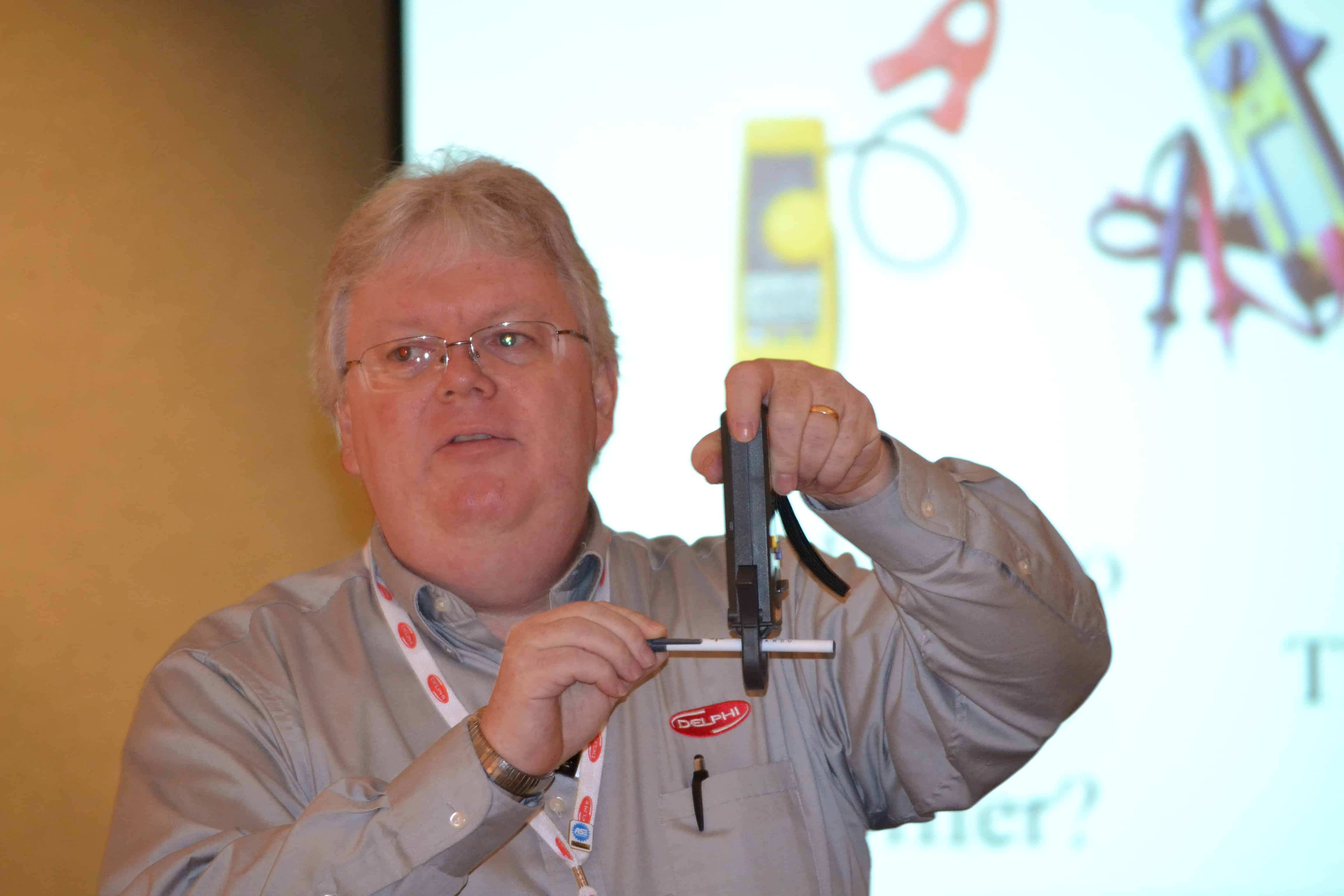J-2534 flashing, an essential automotive maintenance skill
“It’s not if you offer J-2534 flashing to customers; it’s when,” asserted David Hobbs, a senior automotive aftermarket trainer for Delphi Automotive. With this “hook,” Hobbs grabbed the attention of shop owners and technicians attending his seminar titled Diagnostics Under the Dash during MACS 2015 Training Event and Trade Show this past February in Orlando, FL.

“Forty percent of the vehicles in your shop have one or more modules that need flashing,” Hobbs emphasized. “Examples include turning off false malfunction indicator lamp (MIL) warnings, eliminating pattern failure components, battery rundowns, drivability complaints, HVAC performance issues, fuel economy issues, rough idling, component longevity enhancements, and more.”
According to Hobbs, being properly trained is essential. “Don’t try to wing it,” he cautioned. “Technicians must know the difference between reprogramming and reconfiguring. Reprogramming is the process of electronically erasing and replacing data with an updated version transferred via the internet or cloud, whereas reconfiguring is a process that doesn’t require an internet connection. In addition, not every scan tool is your friend — some scan tools will flash only, some will let you to reprogram, and some will even enable you (with a subscription) to emulate a factory scan tool. The closer you are to having or emulating an automaker’s scan tool, the better.”
“Think networks and systems, not just components and circuits, when diagnosing and J-2534 flashing. Purchase factory scan tools for the primary lines you service, and a good general aftermarket scan tool for the other brands. Invest in a J-2534 device to supplement your scan tools. Then gather other resources and learn where to locate online flashing information and instructions to take the guesswork out of servicing.”
Looking at J-2534 flashing from a high level, Hobbs shared six basic steps in performing module reprogramming:
- Baseline the reprogramming session to determine if flashing is warranted.
- Determine whether a module can be programmed; some modules can only be replaced.
- Ensure the equipment you use meets or exceeds the minimum requirements of the vehicle brand you are working on.
- To transfer the calibration to the vehicle module, know where to find vehicle-specific calibrations.
- Validate that the module has been updated to the current calibration.
- After configuring a module, you may have to reintroduce the module to others it’s connected with in a vehicle.
“Here’s the bottom line,” Hobbs concluded. “Those who continue to ignore J-2534 flashing are missing service opportunities that can be sold as easily as informing your customers that their vehicle’s onboard computers have a number of updates that need to be downloaded. Some vehicles fixes today can only be addressed by performing these software flashes. In the very near future, this will become more prevalent. It’s time to get prepared now.”
If you’re a service professional and not a MACS member yet, you should be! Become a member and receive a technical newsletter with information like what you’ve just read in this blog post visit http://bit.ly/10zvMYg for more information.
You can E-mail us at macsworldwide@macsw.org . To locate a Mobile Air Conditioning Society member repair shop in your area. Click here to find out more about your car’s mobile A/C and engine cooling system.
Mobile A/C professionals should plan to attend 35th annual Mobile Air Conditioning Society (MACS) Worldwide Training Conference and Trade Show, Mobile A/C The Next Generation, February 11-13, 2016 at the Caribe Royale, Orlando, FL.
